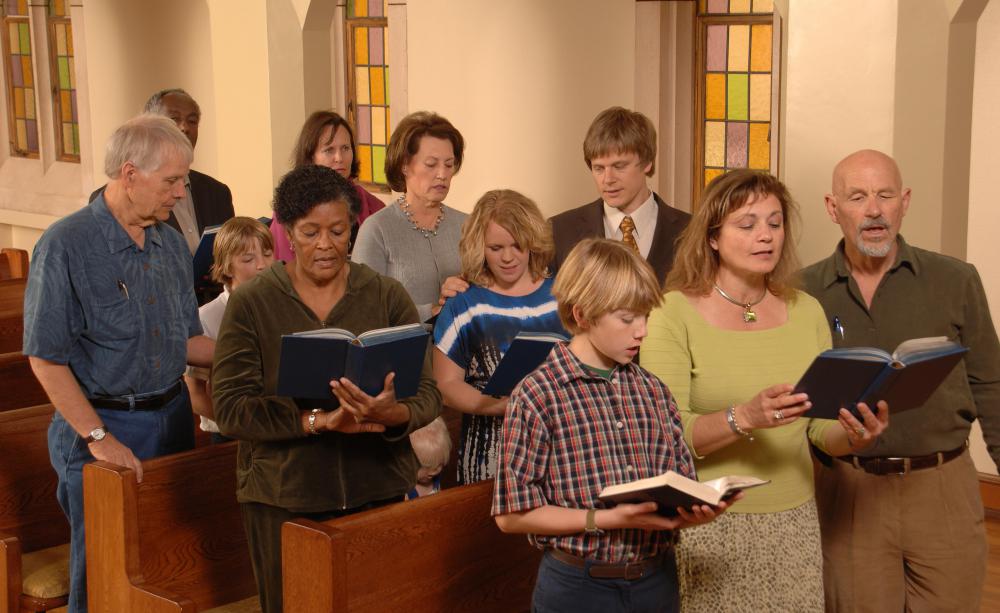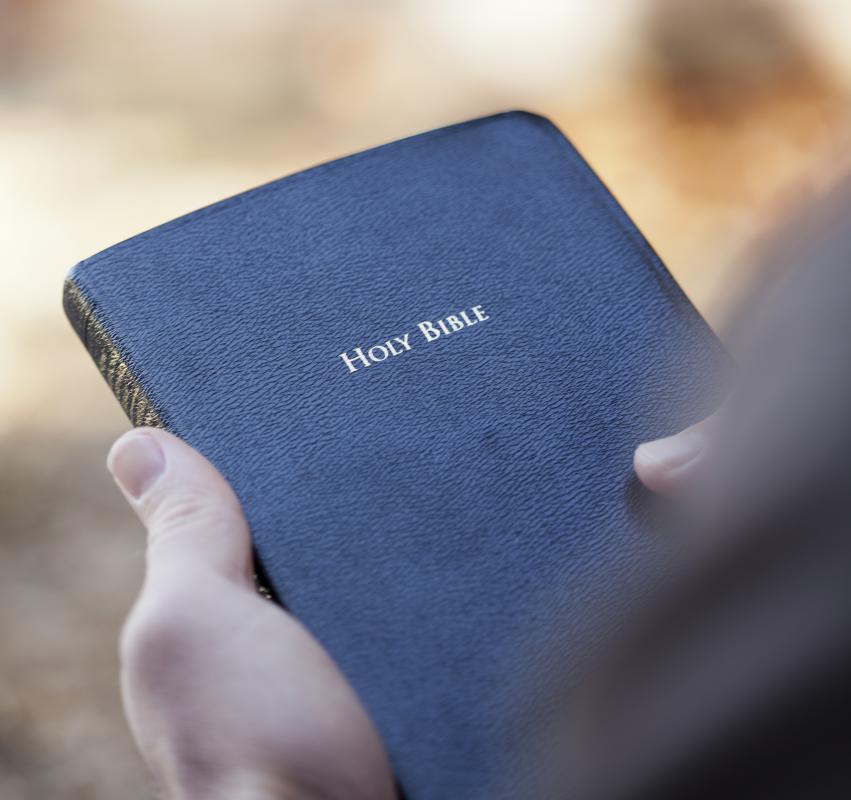At WiseGEEK, we're committed to delivering accurate, trustworthy information. Our expert-authored content is rigorously fact-checked and sourced from credible authorities. Discover how we uphold the highest standards in providing you with reliable knowledge.
What is a Hymnal?
People of all faith traditions have used singing as part of their worship. The Christian faith in particular, has historically been linked with songs of praise, or hymns, to their God. These hymns are historically compiled into a hymnal.
A hymnal is, obviously, a collection of hymns, but many also have acts of worship and ritual within their covers. A hymnal may be published by a particular Christian denomination, but there are also “generic” hymnals that include the most popular hymns from over the years.

The hymnal certainly has its origins in the Catholic missal, or book of prayers and rituals. During early Christianity, church-goers sang the Psalms and Gregorian chant also has its origins here. As worship music itself began branching out, Gregorian chants then set to music other parts of the Catholic liturgy, as well as other texts from the Christian Bible.

Once literacy became more widespread, churchgoers began reading their missals and singing along during worship. Out of this, composers began writing sacred music, some meant to be sung by choirs. When church-goers wanted to learn these beautiful compositions for congregational worship, the hymnal was born. Such notable hymn writers as Dr. Isaac Watts and Charles Wesley had their hymns compiled into hymnals in the 1700s.

A person paging through a denominational hymnal can usually get a good idea of the church’s practices and beliefs by looking at their liturgy and ritual. Many hymnals contain responsive readings, which are usually Bible texts meant to be read in a call-and-response fashion by the clergy and congregation. They may also contain the denomination’s official wedding ceremony, baptismal rites, confirmation rituals, an order of worship, and even suggestions for services of death and resurrection.
A hymnal also includes a wealth of information about the hymns themselves. Most hymnals include the hymn’s composers, Scripture references and the tune name. The tune name obviously refers to the tune itself, since many hymns are sung to the same tune, or to more than one tune. This is because many hymns began their lives as poems and were set to popular tunes of the day, to make them easier to sing.
A hymnal may also index hymns by tune name, so a person can look up an unfamiliar hymn name to see if they recognize the tune from a familiar hymn. A good example of this is the tune name “Cwm Rhondda.” This Welsh hymn is usually known as “Guide me, O Thou Great Jehovah,” and is the national hymn of Wales. However the tune is also used in the hymn “God of Grace and God of Glory.” By looking up the tune name, a person can find all hymns sung to a particular tune.
A good hymnal will also have a meter index. This allows a musician to set an unfamiliar hymn to the tune of a familiar hymn, if both hymns have the same meter, or rhythm. The hymnal will also have a composers’ index, and a list of the hymns by first line and title.
A denomination will usually update its hymnal periodically and the aim is to weed out hymns that are never sung, and keep those congregations love to sing. The hymnal committee should always be careful than hymns included are suitable for congregational singing. Hymns with overly intricate melody lines, or with irregular meters and lyrics sometimes should be avoided so the congregation can learn hymns more easily.
Most church-goers find the hymnal enhances their worship experience by allowing them to clearly see all the words to their favorite hymns, and to fully participate in the liturgy and worship of their church.
AS FEATURED ON:
AS FEATURED ON:













Discuss this Article
Post your comments